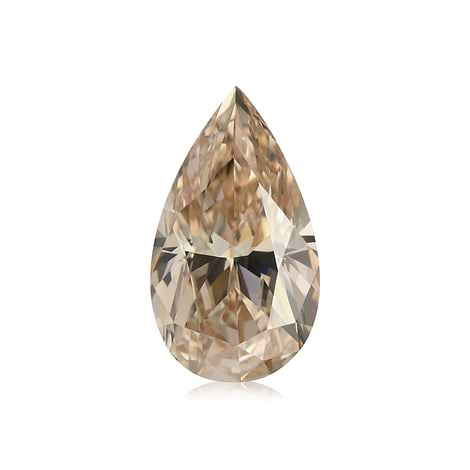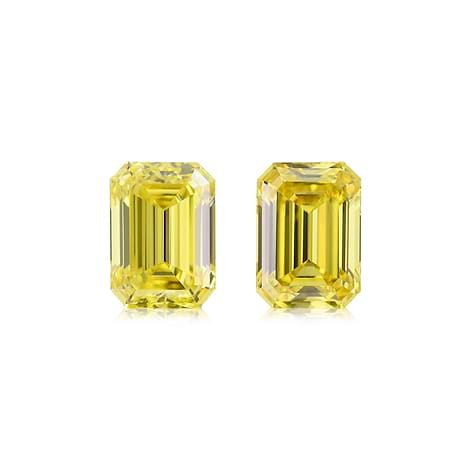When grading a diamond, regardless of which association is assessing the stone, the same diamond characteristics, otherwise known as the 4Cs, are looked at. Depending on what type of diamond it is, different attributes of the diamond can affect the overall quality, and therefore directly affect the price of the stone. For example, with a natural fancy color diamond the color is more important, whereas in a colorless stone the cut is more important. However, regardless of the diamond type, the better the overall quality, the higher the value of the stone.
|
Shmulik Polnauer, LEIBISH's GIA Graduated Gemologist, Chief Diamond Buyer, Louping a rare Argyle Violet diamond |
The diamond clarity is crucial to the overall quality of the diamond. Although, when it comes to the diamond clarity, there are a number of highly respected professionals in the industry who will tell you that as long as the stone is clean to the naked eye, there is no point in spending the additional costs a higher clarity stone will incur. Here are a few reasons why the term eye-clean is so relevant to color diamonds and a closer look as to what eye-clean really means.
Let's First Define What an Eye-Clean Diamond Really is?
If looked at long enough with a high magnification, flaws will be found in each and every stone. However, a diamond’s clarity is assessed according to how the diamond is seen with a diamond loupe at a 10X magnified view. The term eye-clean is used when describing the appearance of the stone, regardless of the clarity grade, when looked at with the naked eye. Since an imperfection may or may not affect the appearance of the stone, there are many that although they have a low clarity grade still appear magnificent.
How the diamond appears face up, meaning from the table down is considered very important. When a jeweler looks at a stone, depending on what they are looking for, they will look at it quite differently than someone not in the trade might. The general public most often looks directly at the table of the stone, from the top. Therefore, if your goal is to get the most for your money, go for something that has a eye-clean face-up appearance to the naked eye.
Especially with a color diamond, although inclusions are found, a diamond may still be considered eye-clean because the color of the stone can sometimes hide the inclusion very well. Or, depending on the location of the imperfection, one might not be able to see the inclusion from the top of the stone. Furthermore, even if it is noticeable on a loose stone, as long as it does not affect the brilliance of the diamond, the jewelry setting may hide the inclusion.
Why is "Eye-Clean" so Significant with Color Diamonds?
A diamond’s clarity is a very important characteristic, and should never be ignored. Only, with fancy color diamonds there are two reasons it is not considered as important as the color. The first because the colors found in these diamonds are what make them so incredibly unique. So much so that diamonds with certain colors will still be considered very valuable even if they are relatively small with a poor clarity grade. The second, and more relevant to the topic of this article, is that most people legitimately want a stone that is pleasing to look at. The benefit of a colored diamond is that depending on the type of inclusions and where they are found in the stone, it might not even be visible with the naked eye.
|
Three natural fancy color diamonds and a LEIBISH diamond loupe |
Diamond inclusions can be white or black. However, since the color is disbursed/distributed throughout the stone and shows more in some areas than others, the inclusions can sometimes be absorbed by the color, similar to camouflage.
What is the Purpose of the Purchase?
Fancy color diamonds are used in some of the most outstanding pieces of jewelry found. However, because of the impressive price performance over the past 10 -15 years, colored diamonds are now attracting a lot of attention as an asset class suitable for a very profitable long-term investment. When a stone is purchased for an investment purpose it will be easier to liquidate when the time comes if it is a higher clarity stone. True, as mentioned previously, the color in the stone is far more important than any other characteristic, but the clarity still plays an important role.
If you are purchasing the stone merely as a product of beauty, which is primarily why diamonds are in such demand in today’s market, many feel there is no reason to pay more for features that you won't be able to appreciate with the naked eye. As they say, “it isn’t like your girlfriends are walking around the street with a diamond loupe.” However, there are many who still specifically look for potentially flawless stones as their hearts are set on ultimate perfection.
It comes down to exactly what your budget is, what the purpose of the stone will be, and what you plan on doing with it while in your possession. Keep in mind that what is considered eye-clean by the trade might not necessarily be considered eye-clean by you. If you are looking for get the most for your money, keep your eyes open for these stones but make sure to get a look at them on your own first.
Contributor: Benji Margolese
















